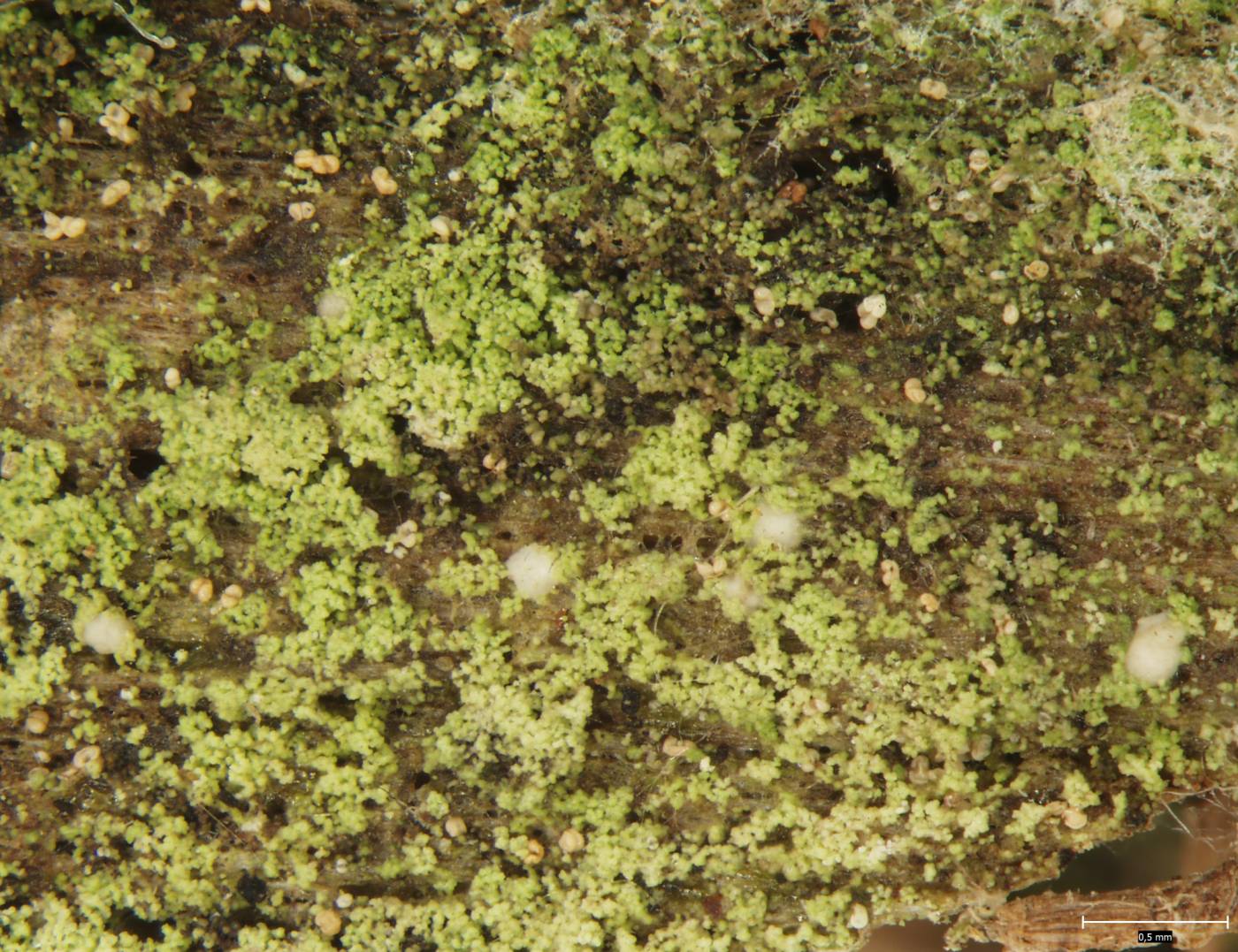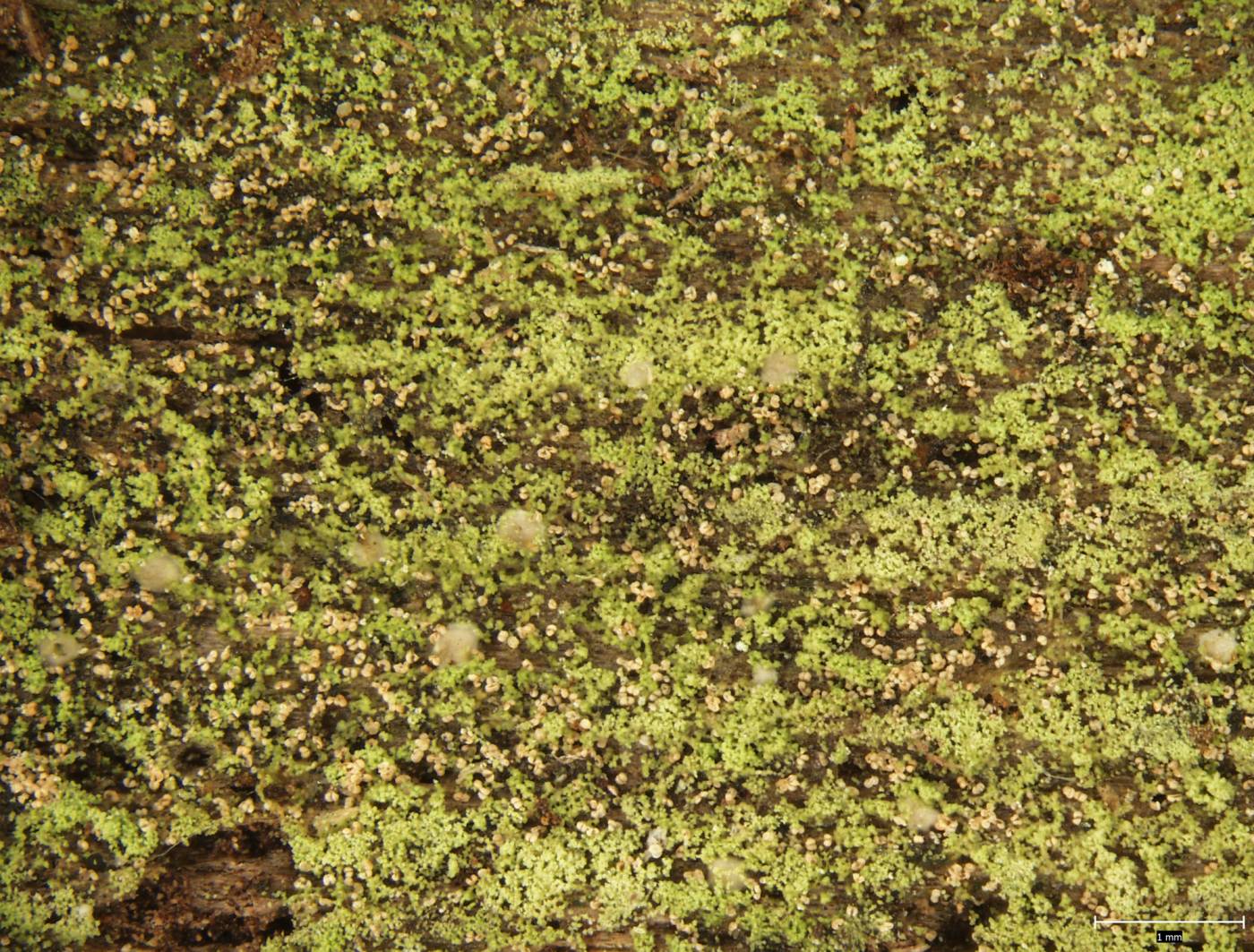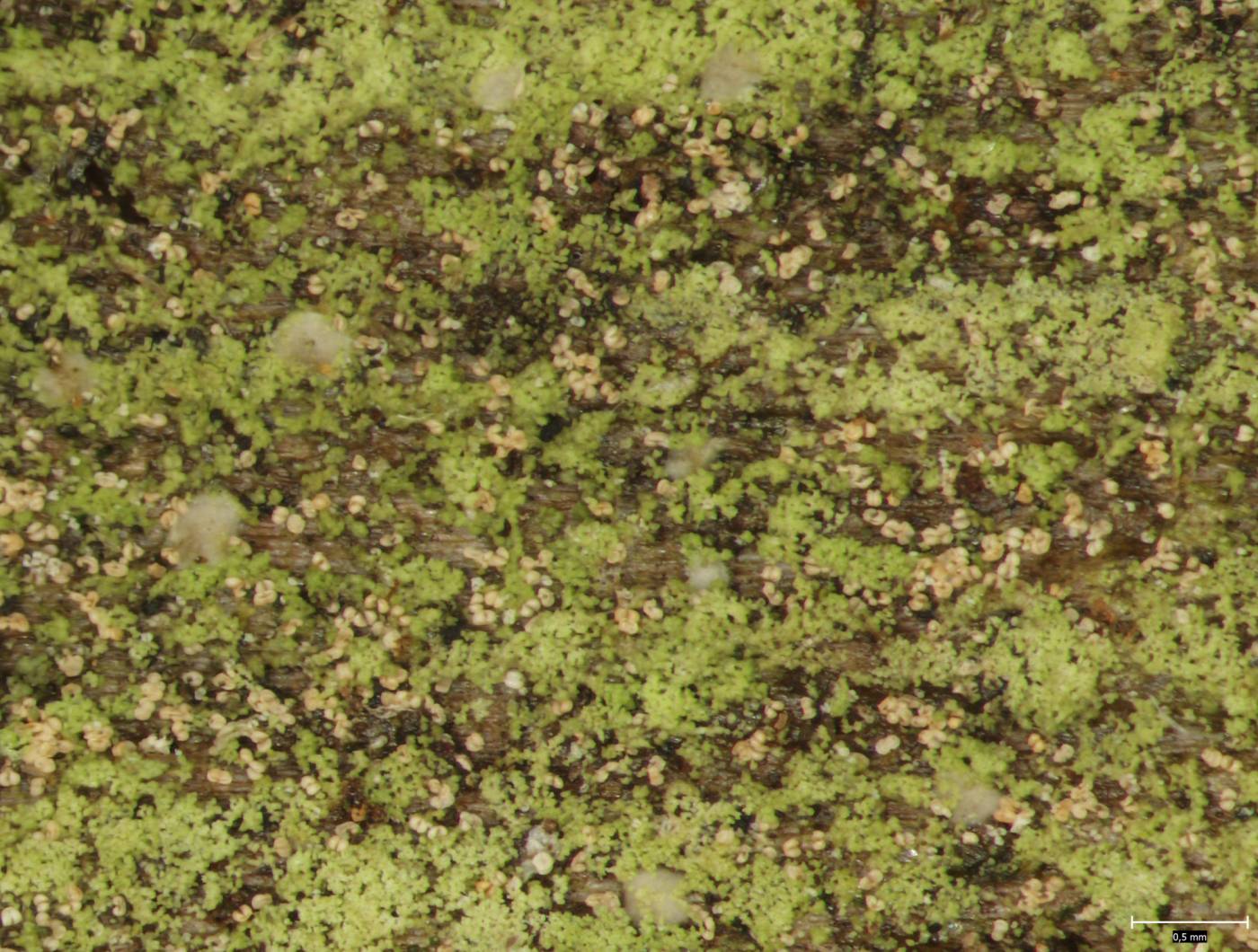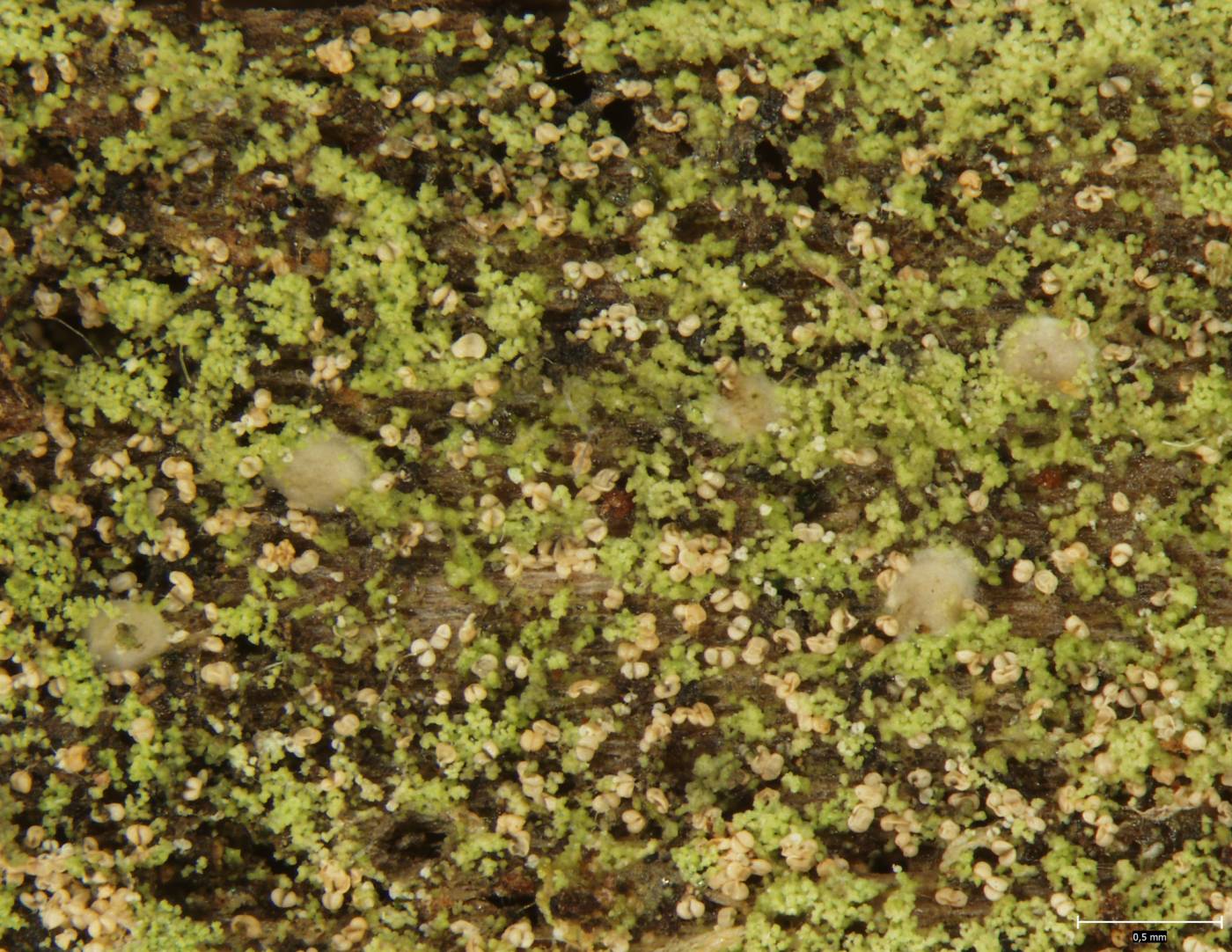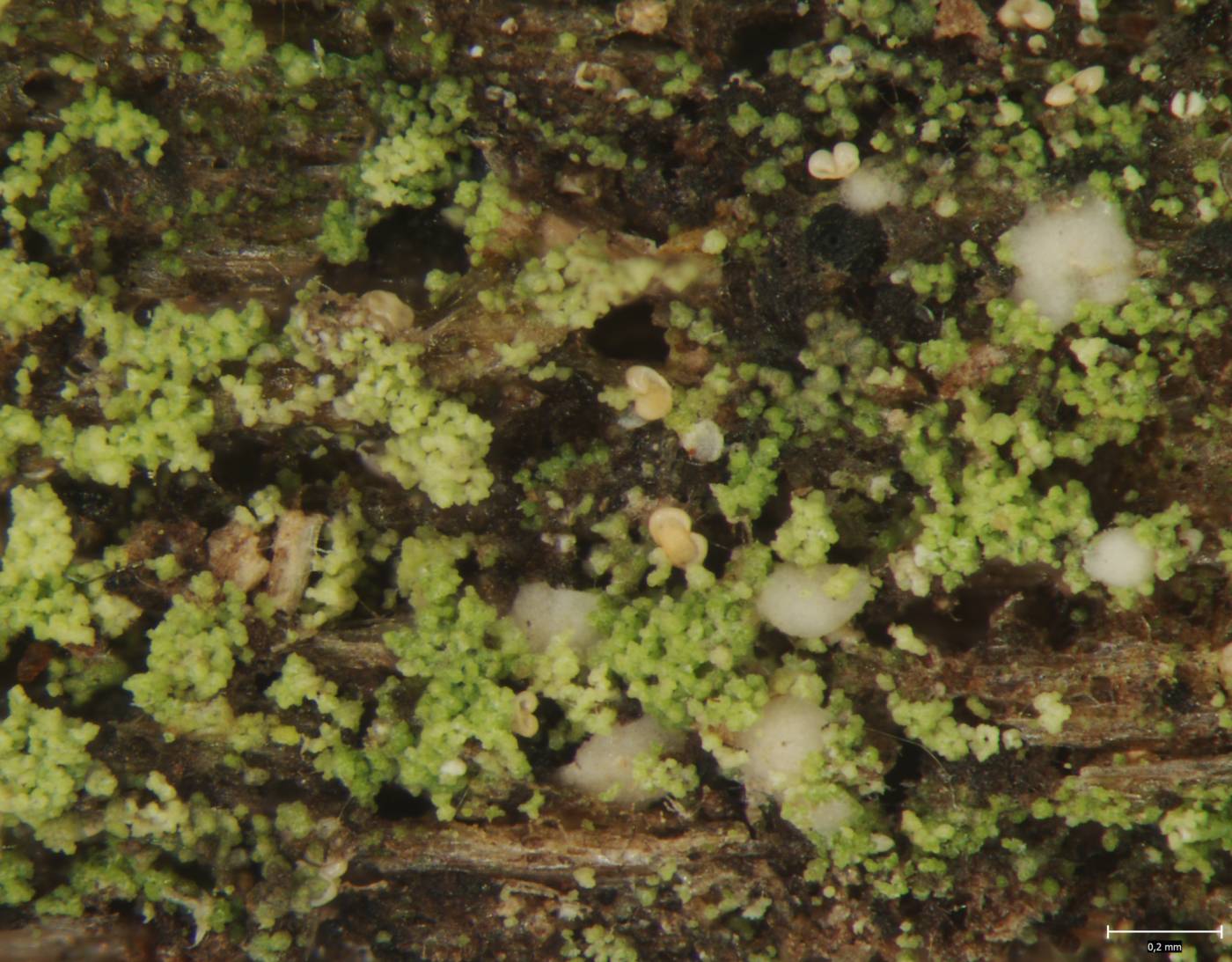A sorediate, rarely fruiting taxon from the M. micrococca agg. It may be distinguished from its relatives by the C+ spot reaction of thallus and pale apothecia (content of gyrophoric acid). However, in the sterile stage, the species may be confused with atypical Trapeliopsis or with Placynthiella dasaea.
The lichen most often grows on wet decaying wood or epiphytically at tree bases. Less often, it may be found also on soil, bryophytes or sandstone rocks. It is relatively often found in managed forests (including parks), but occurs in natural forests as well. Most findings were made in the western part of the country, M. viridileprosa is common, for example, in the Brdy Hills. Its distribution in the Czech Republic still isn’t completely known. The species is expected to be more common than what actual data indicate.
Literature: van den Boom P. P. G. & Coppins B. J. (2001): Micarea viridileprosa sp. nov., an overlooked lichen species from Western Europe. – Lichenologist 33: 87–91.
taxonomic classification:Ascomycota → Lecanoromycetes → Lecanorales → Pilocarpaceae → Micarea
Red List (Liška & Palice 2010):NT – near threatened
Occurrence in the Czech Republic
All records: 168, confirmed 163. One click on a selected square displays particular record(s), including their source(s).
